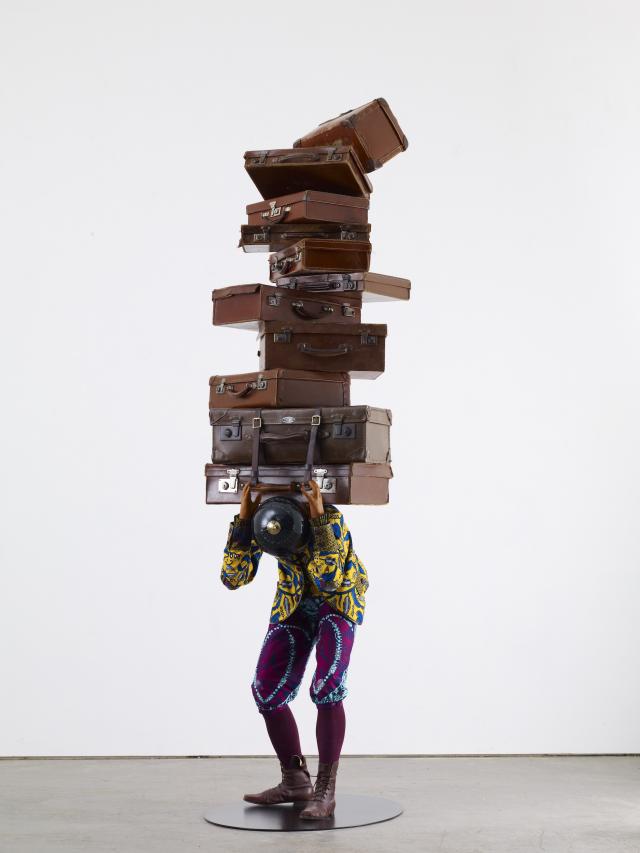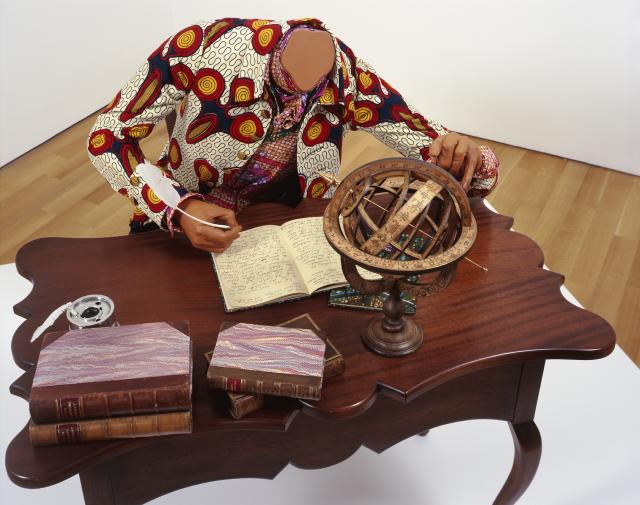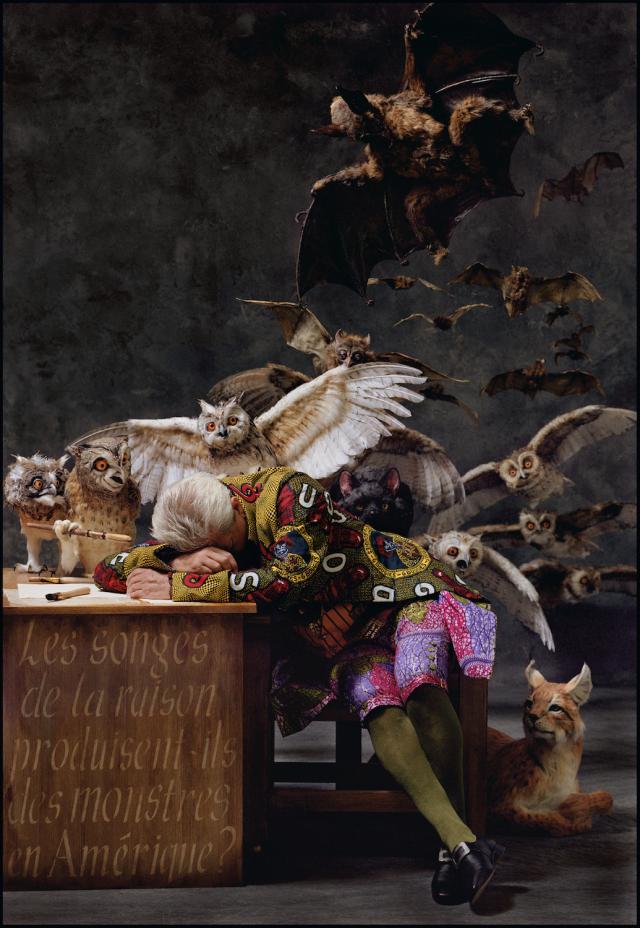
There's an exciting new exhibit in town, and it's gunning for your attention. Pièces de résistance (now on at the DHC/ART) is a survey of the work of Yinka Shonibare MBE – a British-Nigerian artist of great acclaim who likes to scrutinize and subvert as much as he likes to incite and delight. Let's do a little scrutinizing ourselves, and break Mr. Shonibare MBE down by the letters.
1. YBA
Yinka Shonibare MBE is part of the Young British Artists (or YBA) generation: a designation given to a loose group of subversive artists who graduated from the Fine Arts program at Goldsmiths, University of London in the late eighties. Whereas the Chapman Brothers disturb with dioramas, and Tracey Emin creates bedlam with beds, and that little hellraiser Damien Hirst troubles the waters with sharks, Yinka Shonibare MBE's weapon of choice is Dutch-wax fabric. Why? While the colourful textile is commonly understood to be “African” and “handmade”, the cloth actually has roots in Indonesian batik, and is machine-manufactured in Europe. With its mistaken provenance and mixed origin, Dutch-wax fabric is as much contentious as it is beautiful. Yinka Shonibare MBE, "Homeless Child 3" (2013) © Yinka Shonibare MBE / licensed by SODRAC / Photo: Stephen White / Courtesy James Cohan Gallery
Yinka Shonibare MBE, "Homeless Child 3" (2013) © Yinka Shonibare MBE / licensed by SODRAC / Photo: Stephen White / Courtesy James Cohan Gallery
2. MBE
So, what's with the “MBE”? Well, In 2005, Shonibare was awarded the decoration of Member of the “Most Excellent Order of the British Empire” (MBE). While other black British artists have turned down this distinction, Shonibare decided to take it on and do something quite interesting with it. By adding the acronym officially to his professional name, Shonibare MBE manages to continually underscore the tensions that arise in his work: those between power and class, between belonging and marginalization.
3. IRL
In real life, Shonibare is a British born, Nigerian-raised, Goldsmiths MFA-ed (Shonibare returned to Britain to do further schooling), Turner Prize shortlisted artist, who also happens to be living with a disability (Shonibare contracted an illness at 18, which left one side of his body permanently paralyzed). In his work, he has embodied Victorian Dandies, Dorian Grays (well, one Dorian Gray, at least), and has crafted aesthetic visions that far surpass his physical capabilities. The fact that Shonibare is a conceptual artist fixated on the colonial past and the post-colonial present who delegates much of the production of his labor-intensive projects to a network of other artists both charges and adds facinating complexity to his already incredibly layered concepts. Yinka Shonibare MBE, "The Age of Enlightenment – Immanuel Kant" (2008) © Yinka Shonibare MBE / licensed by SODRAC / Photo: Jason Mandella / Courtesy James Cohan Gallery
Yinka Shonibare MBE, "The Age of Enlightenment – Immanuel Kant" (2008) © Yinka Shonibare MBE / licensed by SODRAC / Photo: Jason Mandella / Courtesy James Cohan Gallery
4. LOL
Maybe that last bit made Shonibare MBE sound kind of stiff or dry or – heaven forbid – heavy. My bad. In actual fact, much of Shonibare MBE's work is rife with whimsy and humour. And naughty innuendo. Oh – and kaleidoscopic costumes, colours and fun. And now I just reduced his oeuvre to a showboat spectacular. But you get what I'm saying, right? Colourful. Whimsical. Thought-provoking. Shame-inducing. But clever as all get out!
5. DHC/ART FTW!
Montreal's own DHC/ART Foundation is the first to bring a large collection of Shonibare MBE's work to Canada! DHC/ART for the win, indeed!  Yinka Shonibare MBE, "The Sleep of Reason Produces Monsters (America)" (2008) © Yinka Shonibare MBE / licensed by SODRAC / Courtesy James Cohan Gallery
Yinka Shonibare MBE, "The Sleep of Reason Produces Monsters (America)" (2008) © Yinka Shonibare MBE / licensed by SODRAC / Courtesy James Cohan Gallery
Yinka Shonibare MBE's Pièces de résistance
From April 29–September 20, 2015 | dhc-art.org